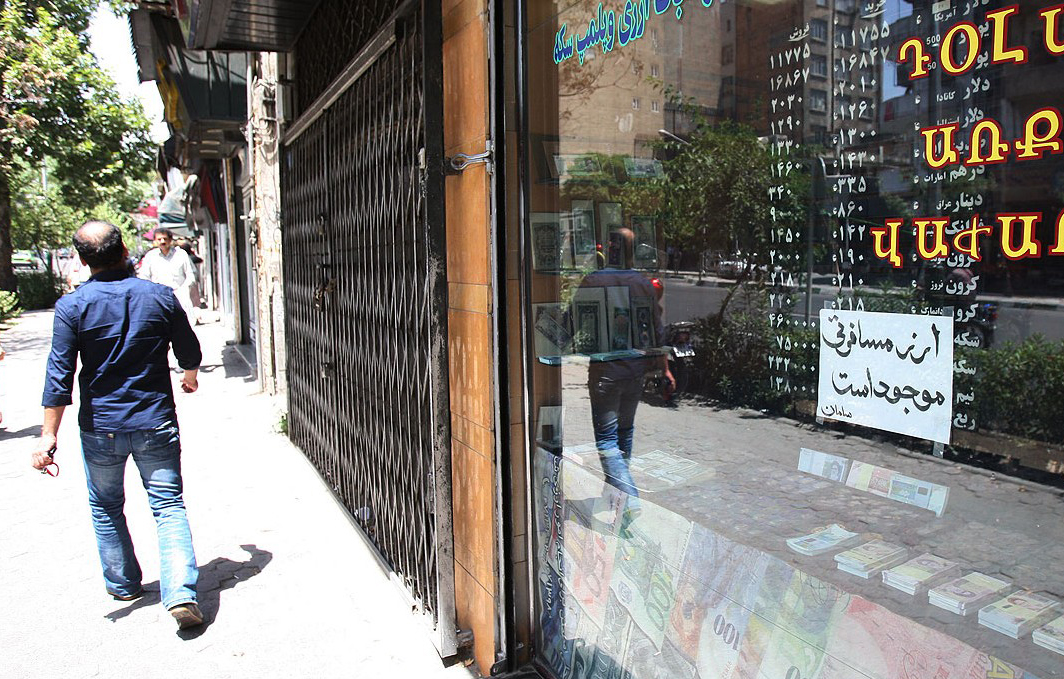The rial’s recent rally against the US dollar in the Iranian foreign exchange market is noteworthy, as marathon nuclear talks between Iran and the six world powers reach their final weeks. It is raising hopes that with the lifting of sanctions weighing on Iran’s economy, the rial may even appreciate against the greenback, contrary to what the public may expect.
The rial has reached a two-month high against the dollar this week, giving momentum to expectations of a rate break for a post-sanctions era. The optimism, however, comes with a caveat: The rial rally may be short-lived and the chart of the rial may not look bullish once the immediate effects of a nuclear deal fade away.
Iran and P5+1—the US, Britain, France, Russian, China and Germany—are negotiating to reach a comprehensive deal over Tehran’s nuclear energy program by the self-imposed deadline of June 30. In exchange for Iran limiting parts of its nuclear program, the West has promised to lift all nuclear-related sanctions against the country.
“As optimism for a final nuclear agreement has grown and some of the Iranian assets frozen abroad have returned to the country, the rial has appreciated against the dollar in recent weeks,” says Mehdi Taqavi, an analyst.
Taqavi told SMT News that although the rial’s appreciation has been modest, it can presage a bigger rally with the termination of sanctions.
Unified System
Market analysts are almost unanimous in declaring that a post-sanctions stable foreign exchange rate depends on how the Central Bank of Iran responds to the situation. Scrapping the dual exchange regime and adopting a unified system would be inevitable, experts say.
The trumpet for unifying exchange rates has already been sounded and the market is already moving in the direction of a unified exchange rate system.
Hossein Abdo Tabrizi, a member of the High Council of Exchange Market Representatives, recently predicted that with the lifting of sanctions, foreign exchange rates will be unified.
He said once the sanctions are relaxed, the exchange rate system will rapidly shift toward a unified regime. He forecast, however, that major forging currencies—notably the US dollar—would appreciate against the rial since a stronger rial would be ultimately detrimental to the economy.
The rial is currently traded at two rates with one being decided by the CBI and the other set in the bureau de change market in Ferdowsi Street. The market rate is subject to fluctuations almost on a daily basis.
Activists have repeatedly warned about the many dangers and drawbacks of a dual exchange rate system. Participants at a recent economic forum in Tehran unanimously called for the adoption of a unified exchange rate to eradicate corruption and nepotism that have evolved around the current dubious system.
A unified system is also expected to put an end to speculative ventures that has led many in the past to hoard foreign currencies, hoping to sell them at a higher price. The process, however, needs careful management by the government but experts are optimistic that the Hassan Rouhani administration is up to the task, as its record indicates.
Music to the Ear
Taqavi is adamant that the lifting of sanctions and the subsequent increase in rials’s value would be a boon to the economy, since this would lower commodity prices.
“When enough dollars are injected into the market following asset releases, a fall in prices is not far-fetched,” Taqavi said.
He added that Investors are no longer interested in stocking on foreign currencies and this, along with the government’s initiatives, has led the dollar to be traded at around 30,000 rials from 40,000 rials just a few years ago.
“The dollar may stay well below 30,000 rials with the lifting of sanctions,” Taqavi predicted.
Tangential Forces
Abdolreza Amirtash is another analyst who anticipates a stronger rial in the post-sanctions days. He says the current stability in the forex market stems from weak supply and demand.
“Everyone is waiting for the outcome of the nuclear talks and this is the reason for the sluggishness in the market and with a nuclear agreement, the rial would certainly appreciate against the dollar,” Amirtash said.
The only concern would be the fragility of such calm in the forex market, which the analyst says totally depends on the actions of the government.
“It all depends on what CBI and the government do in the post-sanctions era and one of the best strategies to keep the market stable would be unification of exchange rates,” the expert concluded.


